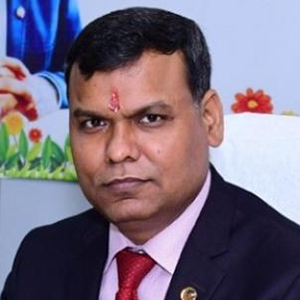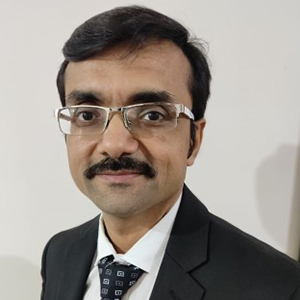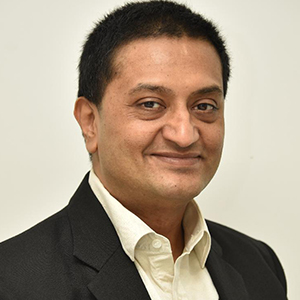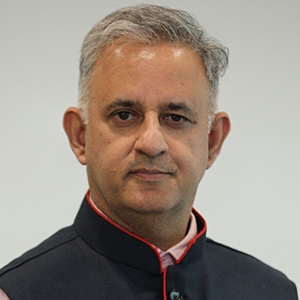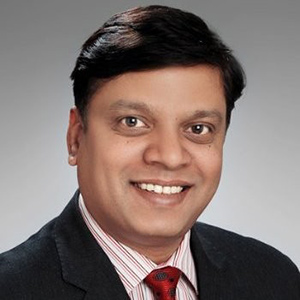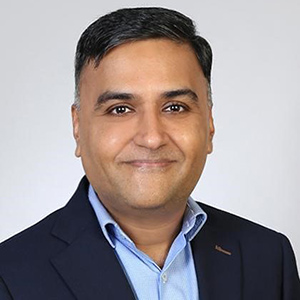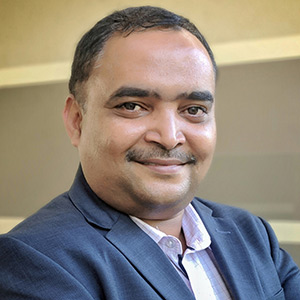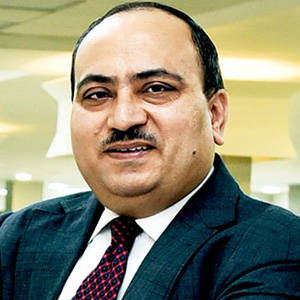Overview
The global digital payments industry has exhibited its resilience in 2021, developing at an 11% rate and arriving at another high of $2.1 trillion around the world. Development seemed solid across all regions, especially in Asia-Pacific and Africa enlisting double-digit yield. Through a global lens, the Indian payment sector is experiencing an ecosystem expansion and transfiguration altogether— a broad gamut of fintech, payments, and banking sub-ecosystems has appeared. Prominent players are emerging in the digital payments and banking sphere. The digital payments area has seen a massive roar over the past few years, booming at a compound annual growth rate (CAGR) of 30%.
The industry has especially expanded due to new developments paired with regulatory support and technological advancements. UPI has moved the dial forward, making 6.8 bn transactions worth INR 11.17 trillion in September alone. In addition, the card industry has also witnessed significant growth in terms of volume. The total number of active debit and credit cards circulated by the end of Q2 2022 crossed 1 bn. Bharat Bill Payment System (BBPS) as a platform is also emerging. Since its inception, the country saw new electronic billers; surging at a CAGR of 56%.
With the increasing inclination towards contactless payments, the growth pockets are bright for FinTechs in India. They are investing in infrastructure integrated with AI, machine learning, and blockchain in order to deliver real-time and personalized solutions to customers. If you look at the stats, India has over 2100 FinTechs, out of which 67% have emerged in the last five years. 23 FinTechs have so far earned the status of a unicorn. The market size is growing by leaps and bounds and will touch ~$150 Bn by 2025. $1 Tn in Assets Under Management (AUM) and $200 Bn in revenue by 2030.
However, the story of India Digital Payments does not end here. The new use cases like PaaS, BNPL, B2B payments and digital currencies can be considered major stimulators disrupting the business models of the existing companies. At the same time, regulatory authorities are devising a fresh umbrella body for payments which will be monitored by the provisions of Payments and Settlement systems (PSS). Innovations in payments have driven India into a universe of growth and opportunities. Now, we should focus on the key challenges- creating sustainability for the payments industry; setting a roadmap to profitability for businesses; developing a dynamic ecosystem where varied business models coexist and thrive.
TechCircle, in association with Hewlett Packard Enterprise and Ingram Micro, is organizing "Pay-IT Conclave 2023: Future of Payments – Optimising Gains” a summit to discuss, assess, and chart the future of the payment ecosystem. It shall offer necessary insights to stakeholders- banks, FinTechs, and payment entities for the sustainable and robust development of this sector. This one-day event will speak about challenges vs. opportunities, best practices to widen the economic value, automation, and digital footprints in FinTech and payments industry.
Agenda
-
4:30 – 5:30 PM
Registration & Networking
-
5:30 PM – 5:45 PM
Welcome Address, Introduction & Context Setting
Shalil Gupta, Business Head, Mint & Mosaic Digital
-
5:45 PM – 6:05 PM
Fireside Chat 1: Who will lead the next payments revolution?
Partnership between banks, technology providers, and distributors of financial products via nonfinancial platforms underpins what has been hailed as the embedded-finance revolution. Sitting at the intersection of commerce, banking, and business services, payments has been one of the first use cases of embedded finance, and a large number of the aspiring embedded-finance providers originate from the payments industry. What makes the next generation of embedded finance so powerful is the integration of financial products into digital interfaces that users interact with daily. For consumers and businesses using these interfaces, acquiring financial services becomes a natural extension of a nonfinancial experience such as shopping online, scheduling employees to work shifts, or managing inventory. Whoever enables the above will lead the game.
Speakers:
Devika Nayyar, Country Manager BFSI- India, HPE
Anil Kuril, CTO, Union Bank of IndiaModerator: Shalil Gupta, Business Head, Mint & Mosaic Digital
-
6:05 PM – 6:30 PM
Panel Discussion 1: Moving from Incremental to Structural Technology Modernisation
Payments infrastructures are now undergoing full redesigns, and banks are making fundamental adjustments to their core payment systems. There is increasing pressure to support the transition to instant, open, integrated, and cloud-based solutions to meet continuously rising customer experience expectations across the commerce journey. Market forces are accelerating the potential decoupling of payments from the large legacy providers as payments increasingly shifts to outsourcing and software-as-a-service (SaaS) models. Providers that make the technology investments to offer payments as a service could benefit while legacy providers grapple with the changing economics of their frontline business. Extending into payments revenue pools may ultimately be easier than extending outside payments revenue pools only by investing in structural infrastructure modernization.
Speakers:
Ankur Varshney, CTO, SBI Payments
Khilan Haria, SVP - Head of Payments, RazorpayModerator: Ashwin Moduga, Head - Research, Mosaic Digital
-
6:30 PM – 7:00 PM
Networking Break
-
7:00 PM – 7:20 PM
Special Address: Payment Trends for 2023
Indian digital payments market witnessed steady growth at a CAGR of 23% (volume-wise), with a transaction value of approx. INR 110 trillion in FY2022. Accelerated shifts to contactless payments; multichannel, integrated gateways; and new partnerships to access capabilities -have largely contributed to the development. The quick adoption of contactless payments and emerging payment providers is an indication of the availability, convenience, security, and acceptance of safer and faster forms of cashless payments.
By Ramakrishnan Gopalan, Head – Products, India and South Asia, Visa
-
7:20 PM – 7:40 PM
Fireside Chat 2: Financial Inclusion: The Many Faces of Interoperability
Interoperability of PPIs (prepaid payments Instruments) is advancing ease of payments and monetary exchanges via interoperable QR codes, fluid e-wallets, and White Label ATMs. Adding to these abilities, the services are bank-agnostic- anyone can avail them regardless of the bank in which they have an account. RBI has also mandated banks and ATM operators to make the ICCW (interoperable card-less cash withdrawal), accessible at all the ATMs across banks. This scope of interoperability also extends to those living in remote and rural regions. The interoperable digital wallets and micro-ATMs make it possible for them to make all sorts of payments.
Without a doubt, interoperability is a key step towards making payments more consistent and pervasive, and will likewise go quite far in guaranteeing enhanced monetary access and an inclusive financial environment. It can possibly alter the manner in which banking and payments operate.
Sumedha Bose, AGM - Research & Solutions, Mosaic Digital in conversation with Manish Bhatia, President – Technology, Analytics and Capabilities, LendingKart
-
7:40 PM – 7:55 PM
Special Address: Changing Market Landscape: Where does the Profit Margin Stand?
India’s digital payment industry is estimated to boom threefold to $10 trillion by 2026, with UPI holding about 73% of all digital payment volumes by FY26. India's experiments with concepts such as small finance banks, digital wallets, and embedded finance have seemed to flatter the customers. Undeniably they started with great intentions and have figured out how to acquire the clients, but their revenue streams appear to have hamstrung them where profit margins are wafer thin. These are likely to be eroded further by competitive intensity and declining fees. In many cases, payments are more a means to cross-sell other products than a profit center in their own right. Are new payment arenas, such as bill payment, merchant services, and remittances, offering range of financial services and lifestyle services the answer to this dilemma?
By Major Ashish Ahuja, COO, Fino Payments Bank Ltd.
-
7:55 PM – 8:20 PM
Panel Discussion 2: Ending the Zero-MDR Regime
The outstanding development in UPI payments has been credited to the Zero-MDR (merchant discount rate) policy, with merchants leaning towards payments through UPI rather than cards. However, the opposite end of the rope depicts a different picture. Owing to MDR being zero, the sector lost around INR 5,500 crores from UPI and RuPay in 2021. Showing strong deterrence, stakeholders like NPCI have been vehement in resisting the Zero-MDR policy and have demanded a rollback.
The dearth of commercial remuneration demoralizes new players from entering and investing in the market. Hence, the market players insist on switching from zero MDR to a positive MDR. The looming ques is- How will policymakers approach this two-sided market?
Speakers:
Shiv Kumar Bhasin, Group Chief Technology and Operations Officer, National Stock Exchange
Jagdish Narayanan, CIO, Reliance Jio Payments Bank
Rajesh Choudhary, CIO, CSB BankModerator: Ashwin Moduga, Head - Research, Mosaic Digital
-
8:20 PM – 8:40 PM
Tech Talk: IT for a Finance & Technology odyssey
By Prashanth Kamath, Senior WW Product Manager, HPE
-
8:40 PM – 8:45 PM
Closing Remarks
Sanjay Bhat, Enterprise Head, Ingram Micro
Speakers 2023
Anil Kuril
CTO, Union Bank of IndiaAnkur Varshney
Chief Technology Officer, SBI PaymentsDevika Nayyar
Country Manager BFSI- India, HPEJagdish Narayanan
Chief Information Officer, Reliance Jio Payments BankKhilan Haria
SVP & Head of Payments, Product, RazorpayMajor Ashish Ahuja
Chief Operating Officer, Fino Payments BankManish Bhatia
President - Technology, Analytics, and Capabilities, LendingkartPrashanth Kamath
Senior WW Product Manager, HPERajesh Choudhary
Chief Information Officer, CSB Bank LimitedRamakrishnan Gopalan
Head - Products, India and South Asia, VisaSanjay Bhat
Enterprise Head, Ingram MicroShiv Kumar Bhasin
Group Chief Technology and Operations Officer (CTO/COO), National Stock Exchange of India Ltd.Do you have any queries?
Drop us a line and we will call you.




